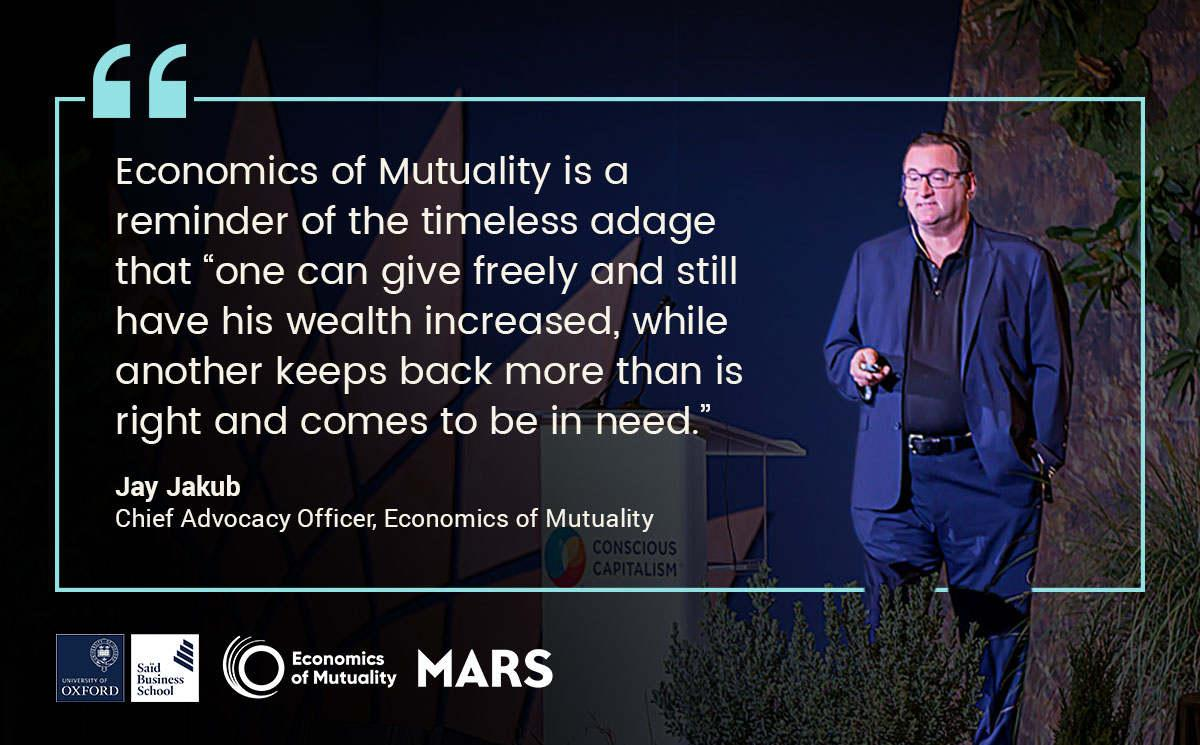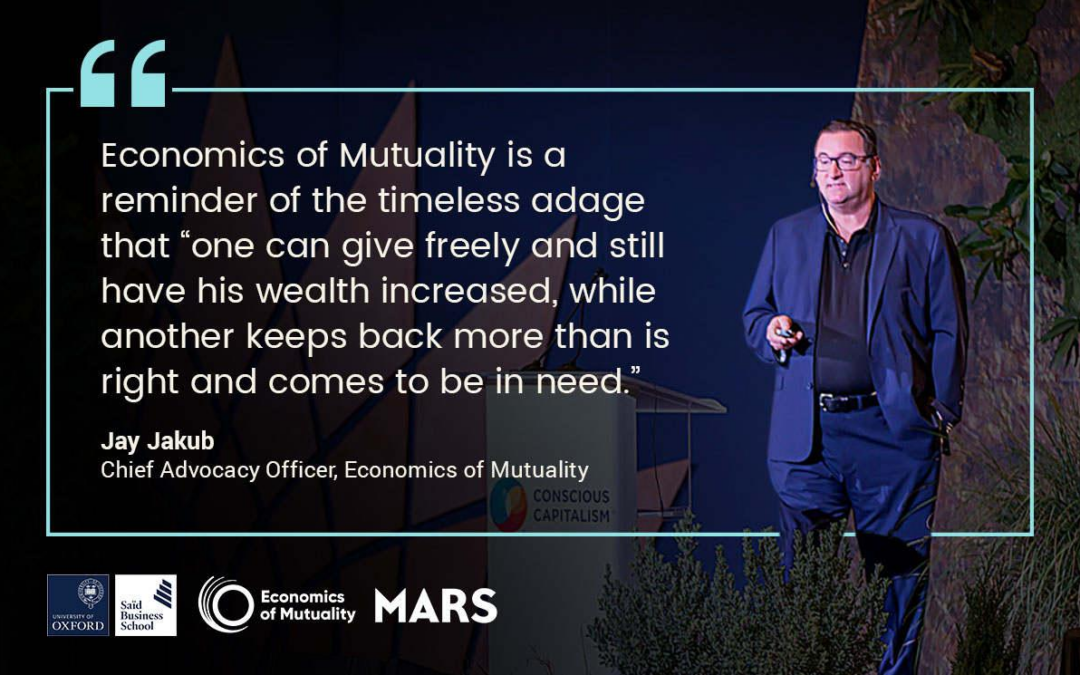Economics of Mutuality (EOM) vs Corporate Social Responsibility (CSR)
Most people have heard of Corporate Social Responsibility or CSR, but have you ever heard of Economics of Mutuality (EOM)? Let’s take a look at each so that we can understand the differences in these two trending movements in the business world.
According to the Business News Daily, CSR is “a type of business self-regulation with the aim of being socially accountable.” While some people may think a business’s top priority is making profits and then to give through charitable contributions to nonprofits’ who’s job it is to make an impact in the community, CSR presents the idea that businesses can themselves play a role in making the world a better place by solving some of the worlds biggest social and environmental challenges.
Corporate Social Responsibility is being implemented in businesses all over the world. In America, Business Roundtable is a community of CEOs that are committed to running their businesses in a socially responsible way. They advocate policies that create jobs, strengthen the economy, and take responsibility for creating high-quality jobs with livable wages. Members include CEOs from IBM Corporation and Adobe to UPS and PayPal.
The problem is that most companies do not fully understand the correlation between their financial success and profitability and their community impact as it relates to their own value chain. As a result, most CSR programs are run as a side initiative as a way for the organization to “do good” without much thought about how it helps the company “do well” or grow as a result. As long as these two ideals of growing an organization and having community impact are not understood as having a symbiotic relationship, CSR programs will continue to play a supporting role to the business instead of being the primary purpose.
That is where Economics of Mutuality comes into play.
Economics of Mutuality
Fortunately, there is a global movement of organizations that now understand that all stakeholders need to flourish to maximize financial returns and that they need to be positively impacting their own employees, members, customers, and local communities to do so. Companies are starting to realize that there are Economics of Mutuality in their value chains that allow them to increase profits by meeting the real and immediate needs of their communities.
“The Economics of Mutuality is a groundbreaking management innovation that empowers business to thrive by meeting the needs of the world. It restores broken relationships between companies, wider society, and the environment.” https://eom.org/the-economics-of-mutuality-explained
For them it is no longer about generating a profit and then picking a cause and donating to charities but instead putting purpose at the center of their business model and aligning their core business as a way to meet needs or solve problems across their human, social and environmental capital structures.
Meeting these needs of their value chain creates value and dollars will always follow value.
Take a look at this short video in which Bruno Roche explains the basics of the Economics of Mutuality (EOM)
Over the past 10 years, this idea that business can not only be a force of good but also be the key to prospering cities has moved mainstream with research from the top business schools such as Oxford, Harvard, and Stanford, as well as countless organizations from across sectors coming together to drive the movement.
Here is a visual representation of just a few organizations that exist specifically to help businesses operate with an understanding of their economics of mutuality.
Click on the map below to see an interactive directory.
How to Implement Economics of Mutuality (EOM) into Your Company
How can you join the mission of these CEOs by using Economics of Mutuality in your business? We have outlined three steps and an example of how to use EOM to meet the needs of your employees, members, or customers.
Step 1: Identify the Need
The first step is to understand that your company is made up of people who have very real and immediate needs waiting to be solved. Your job is to identify those needs and figure out which of them your company can solve.
Your employees and customers are both stakeholder that your company interacts with daily, but do you know the needs that they have? Did you know that there is a massive “hidden” problem that regardless of your industry or geographic location is affecting up to 40% of all of your employees and customers?
ALICE is an acronym that stands for “Asset Limited, Income Constrained, Employed.”
This demographic does not fall below the poverty line, but they are often hard-working American families living on a budget, often with dual incomes, and likely living with a negative cash flow. While they are not living in poverty, they are still struggling. These families are your employees and customers. What are you doing to help them overcome their financial challenges and experience financial well-being?
Step 2: Find Opportunities to Solve the Problem
Sometimes, the benefits that companies offer to their employees aren’t meeting the immediate needs that their employees face. To an employee struggling to feed their kids, saving for retirement in your 401k plan is in the back of their mind and does not solve their immediate need for cash flow, emergency savings and debt elimination.
This is a principle-based on Maslow’s Hierarchy of Needs. This hierarchy shows that basic needs must be met before psychological or self-fulfillment needs. For example, physiological needs such as food and water must be met before someone starts to consider their safety needs such as security.
Companies have an opportunity to meet these basic needs of their employees, especially the ones that fall under the ALICE demographic, by shifting the benefits they offer from traditional ones to more modern benefits.
Step 3: Implement a Solution: Impact Loans
An Impact Loan is a 0% interest charitable loan with a flexible payback to help employees in emergencies and to build emergency funds. It is a benefit that companies could offer to their employees to create a bridge between an employee’s cash flow and their basic needs. The loan is tech-enabled and can be applied for and distributed to the household instantaneously.
Repayment is set up automatically from the borrower’s bank account, and 10% of each payment will go to incentivize the building of an emergency savings account. Employees are encouraged to take as many loans as they need to cover cash flow and expenses as long as they can make the monthly payment.
With an impact loan, there is never a missed or late payment, and if the loan happens to default, it turns into a charitable donation.
The components of impact loans include easy enrollment, automated payments, and financial incentives to encourage savings. Opposed to a retirement plan, Impact Loans can encourage financial behavior that can positively affect a household’s cash flow, debt elimination, and emergency savings. Impact Loans are a solution that can help meet the immediate needs of employees.
This is a proven and very easy way for any business to meet the real and immediate needs of their value chain that will positively impact both their community and their bottom line.
Overview
Corporate Social Responsibility with an emphasis on EOM is no longer optional for companies who want to thrive. It is the future of the business world. The question isn’t “Will you implement EOM into your business,” but rather, “How will you implement EOM into your business?”
Does your company want to identify and meet needs, make a greater impact, and transform your community? Schedule a demo with Community Impact Fund to learn more today.



